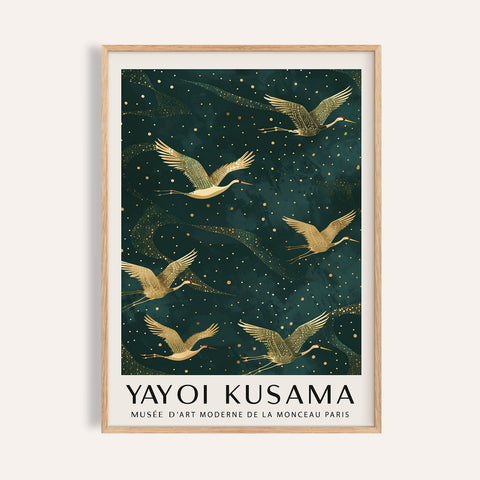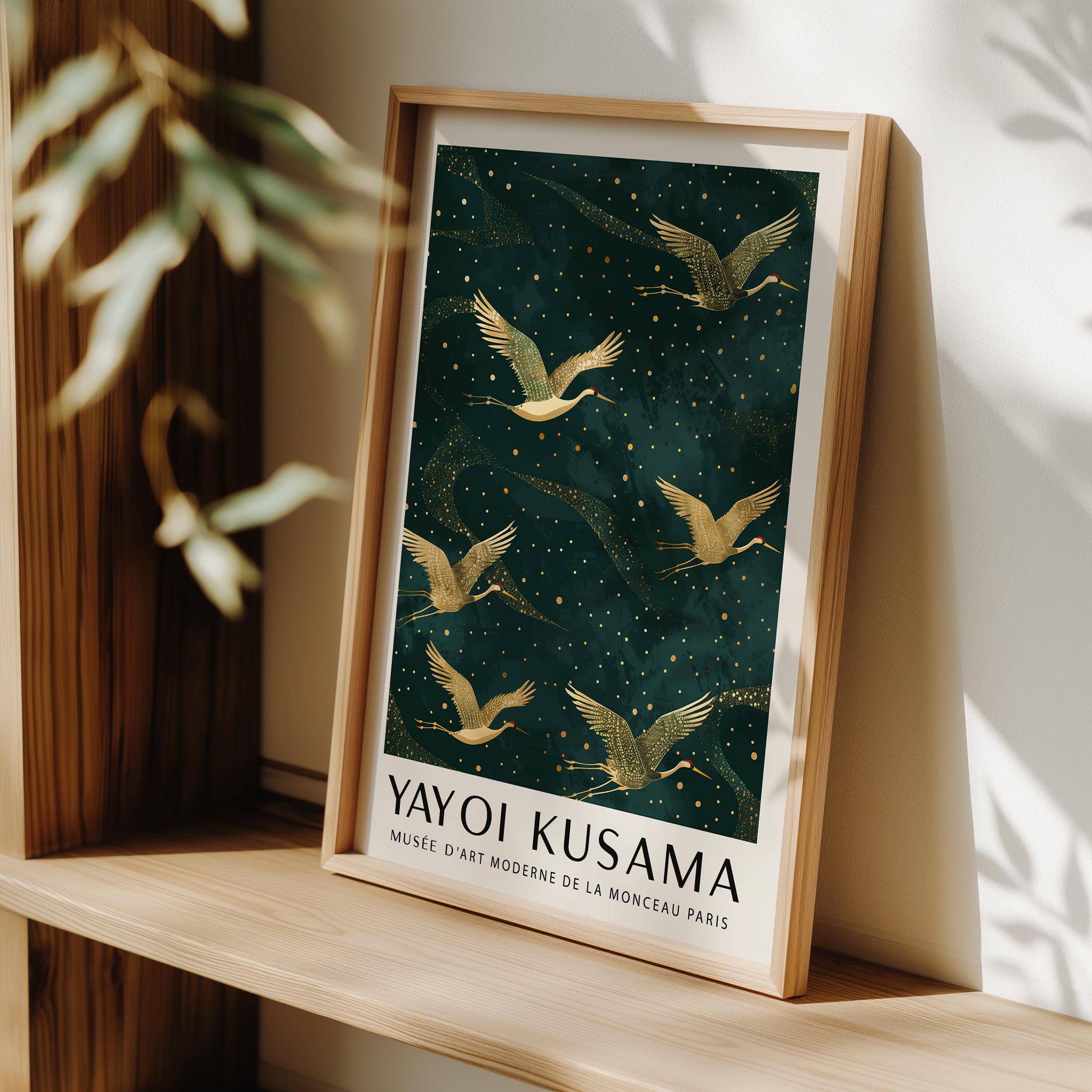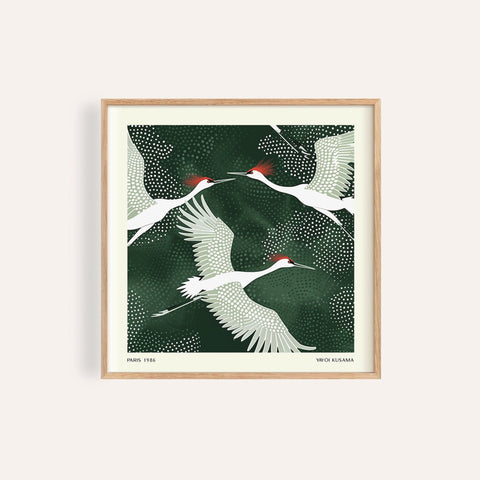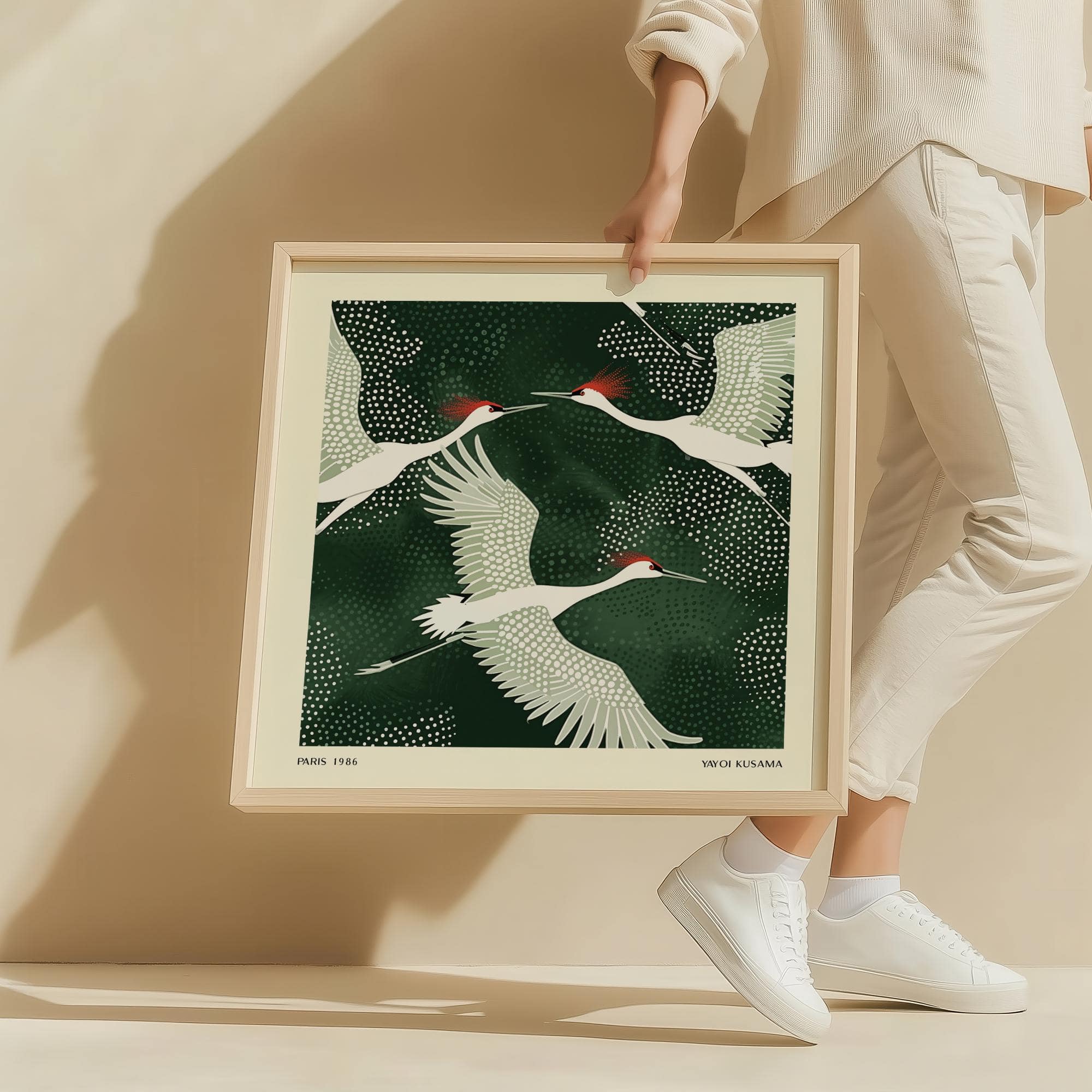
Crane Art
Shop crane art prints that symbolize peace and grace. Crane art for modern homes, inspired by Japanese design and traditional symbolism.




Celebrate elegance and movement with our crane art collection, featuring graceful depictions of one of Japan’s most iconic birds. Cranes symbolize longevity and peace in many cultures, making them a powerful yet subtle choice for wall art in refined interiors.
Notable pieces include Read More
Celebrate elegance and movement with our crane art collection, featuring graceful depictions of one of Japan’s most iconic birds. Cranes symbolize longevity and peace in many cultures, making them a powerful yet subtle choice for wall art in refined interiors.
Notable pieces include Cranes in Flight, a Japandi-inspired design that balances negative space with soft tones and linework. Golden Cranes offers a more traditional aesthetic, rendered with intricate gold accents that evoke historical scrolls and textile motifs.
Crane art fits seamlessly in spaces where serenity and symbolism are valued. Ideal for bedrooms, entryways, and meditation corners, these works bring subtle narrative and timeless motion to modern homes. The minimalist styling and graceful posture of the cranes pair well with neutral palettes and natural textures. For a wider range of avian themes, browse our bird wall art collection, which celebrates the beauty and motion of birds in varied styles.
Looking for more designs rooted in traditional elegance? Visit our Japanese wall art prints collection to explore complementary works that blend cultural symbolism with contemporary design.
Read Less
Frequently Asked Questions
Crane art often symbolizes peace, longevity, and good fortune—especially in East Asian cultures. In Japan, cranes are seen as mystical creatures believed to live for a thousand years, making them a popular subject in art that conveys grace and hope.
Crane art is ideal for serene spaces such as bedrooms, meditation areas, entryways, or reading nooks. It’s particularly suited for interiors that emphasize natural materials, light tones, and a minimalist aesthetic.
Crane art focuses on elegance and symbolism, often featuring stylized poses, elongated necks, and flowing wings. Unlike general bird art, crane imagery tends to carry cultural significance, especially in Japanese, Chinese, and Korean traditions.
Yes, crane art is a natural fit for Japandi, wabi-sabi, and minimalist interiors. The clean lines, balanced compositions, and symbolic weight of crane imagery align perfectly with these restrained yet meaningful design approaches.
Many of our crane art designs draw influence from Japanese aesthetics, including traditional screen paintings, textile motifs, and woodblock prints. The birds are often depicted in flight or standing among clouds, water, or pine trees—common elements in Japanese visual storytelling.
Our crane artworks are offered as framed prints, unframed posters, and canvas prints. This allows for flexibility in presentation, whether you’re creating a gallery wall or adding a single focal piece to a room.
Yes, crane imagery is used in feng shui to invite peace, harmony, and longevity into a home. Hanging crane art in entryways, bedrooms, or living rooms can enhance the tranquil energy of the space.
Crane prints are meaningful gifts for weddings, housewarmings, or milestones. Because they represent long life and happiness, they’re especially thoughtful for couples, new homeowners, or anyone beginning a new chapter.
The History of Crane Art
Crane imagery has a long-standing presence in the artistic traditions of East Asia, particularly in Japan, China, and Korea. These birds are not just admired for their elegant appearance, but also revered for their symbolic associations with peace, longevity, and spiritual connection. Their graceful posture and distinctive features made them a natural subject for early painters, artisans, and textile makers.
In Japan, cranes—often referred to as “tsuru”—are deeply embedded in cultural mythology and art. Dating back to the Heian period, cranes began appearing in folding screens, scroll paintings, and ukiyo-e prints. They were commonly shown flying in pairs or standing amid stylized natural landscapes, representing harmony and fidelity. These depictions often carried auspicious meanings and were frequently used in wedding gifts or ceremonial objects.
Chinese artists also embraced the crane as a noble subject in traditional ink paintings. During the Song and Ming dynasties, cranes were often illustrated with pine trees or the sun, forming symbolic compositions that reflected eternal life and high status. Cranes even appeared on the robes of scholars and officials, indicating intellectual refinement and virtue.
As crane art evolved, it transitioned into modern formats while retaining its cultural roots. In contemporary interior design, crane imagery is often incorporated into Japandi and minimalist decor styles, where its symbolism and visual clarity align with clean, purposeful aesthetics. Today, crane wall art continues to bridge tradition and modernity, offering a timeless option that adds both visual serenity and cultural depth to any space.

















































